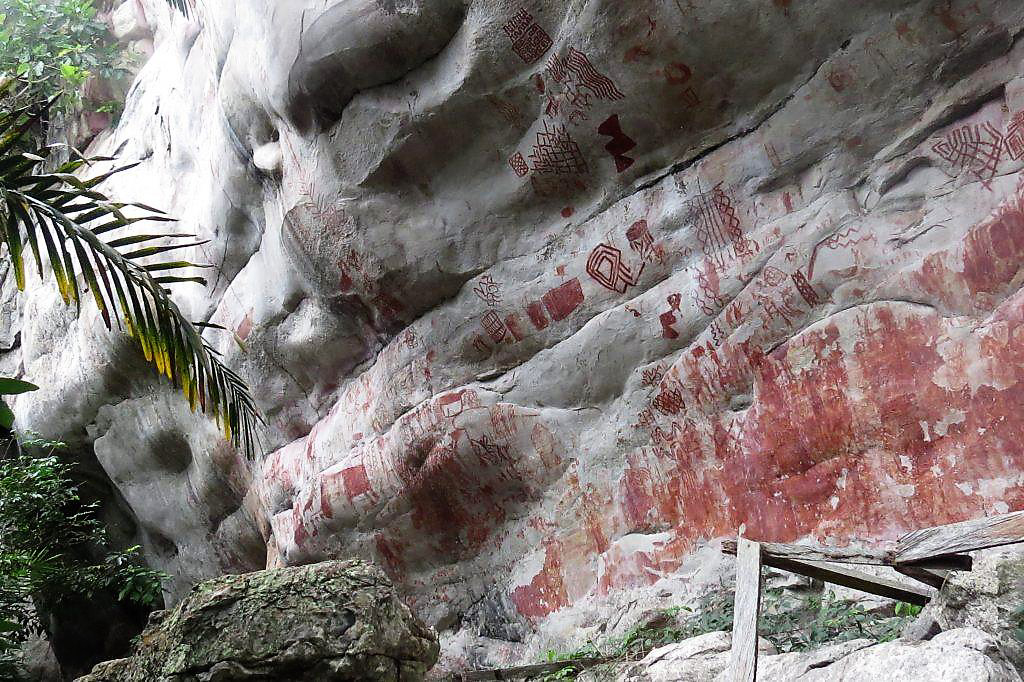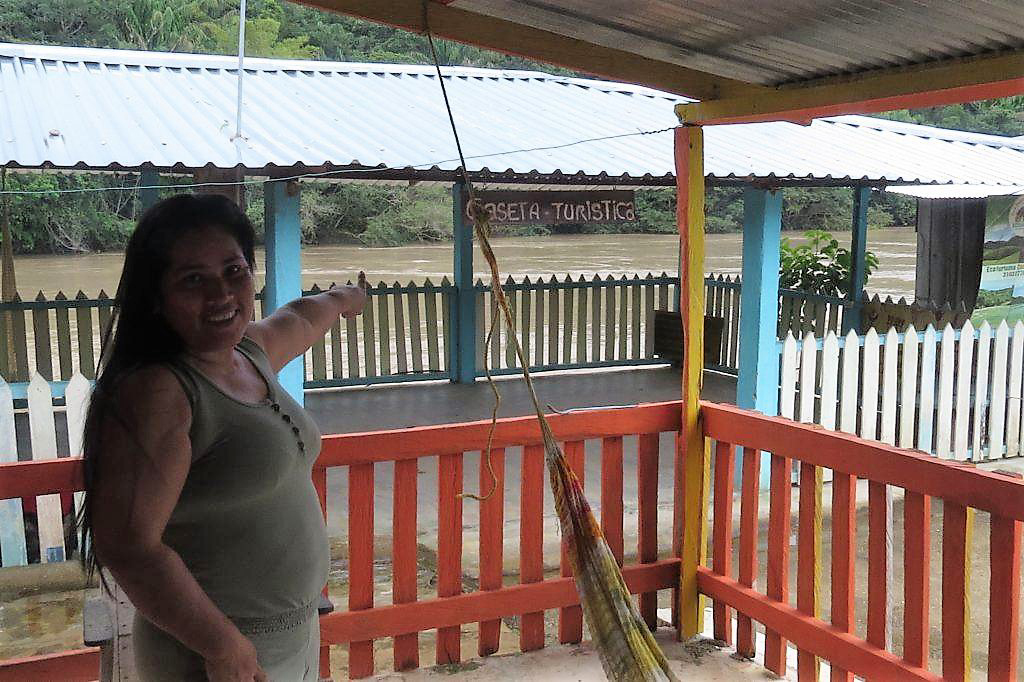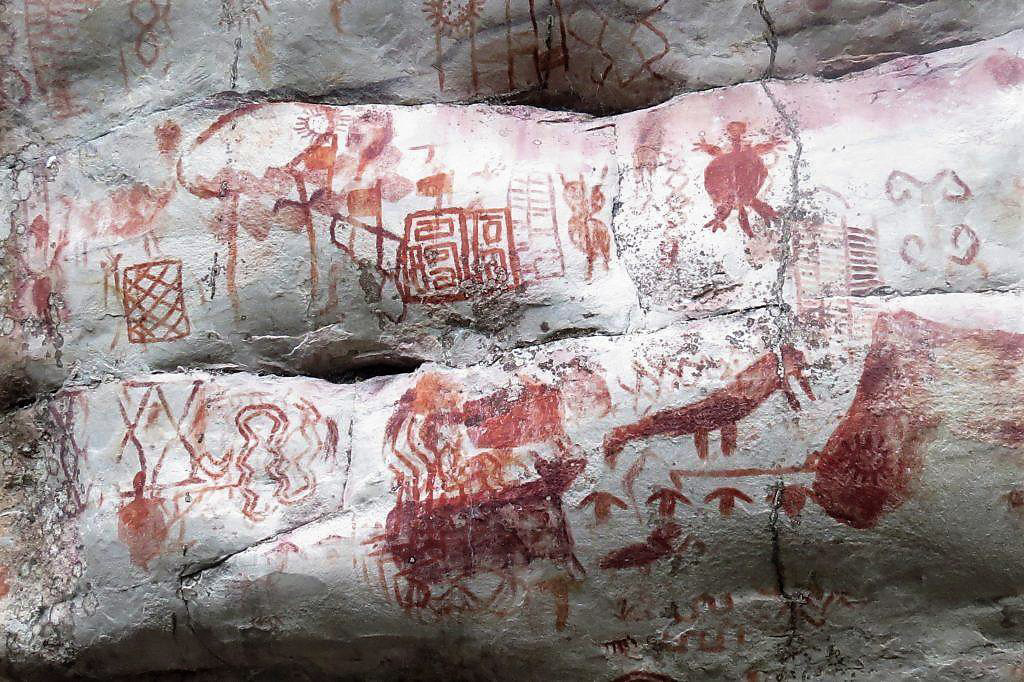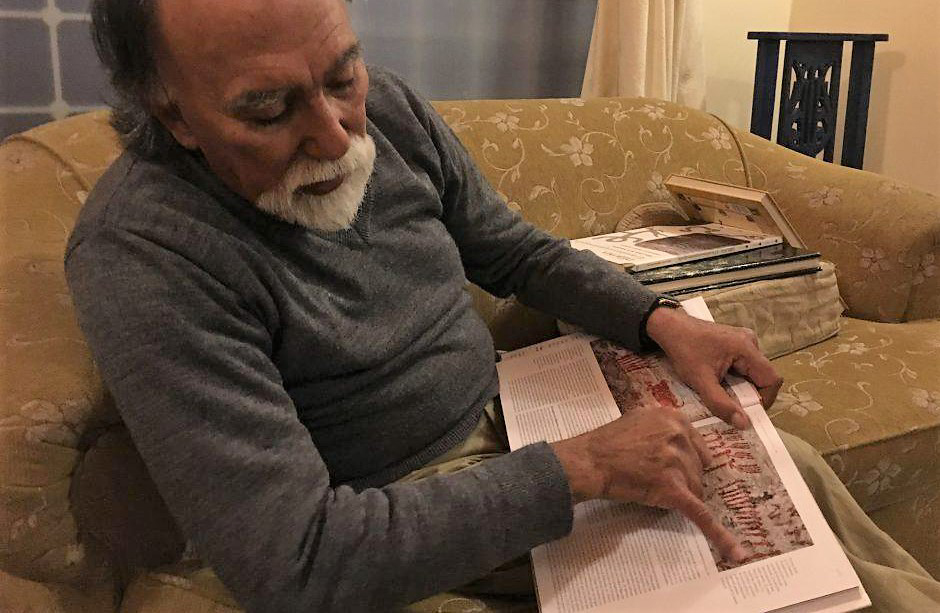


An article by Andrés Bermúdez Liévano and translated by Julie Schwietert Collazo on vice.com - Cave Paintings Are Giving This Colombian Town Life After Cocaine - reports on the ancient rock art that remained hidden among the light green coca plants of Raudal for more than three decades.

The Lindosa rock paintings, protected by the Raudal community. Image: Andrés Bermúdez Liévano.
Decades of conflict meant there have been few visitors to the canyon along the Guayabero River where dense forest protects one of the country's most significant but least-known archaeological sites. In this mountainous region known as Serranía de la Lindosa, there is a panel of rock art which is considered to be one of the most important sites in Colombia. Archaeologists have not yet accurately dated the rock art, but believe it to be older than 400 years.
Cave paintings in #Columbia protected by the local communityhttps://t.co/X4MZkSJWkw pic.twitter.com/FwOmcPgEGr
— Bradshaw Foundation (@BradshawFND) January 15, 2018
The Lindosa rock paintings. Image: Andrés Bermúdez Liévano.
The rock art depicts tapirs, lizards, pregnant women, ladders, and ritual dances. Protecting the paintings is a community that, for years, lived off coca plants but now hope to promote a tourist project in Raudal, a small town along the Guayabero River. Today, thanks to coordinated efforts by the guides of San José del Guaviare and the local community, up to 100 tourists a day are visiting.

The Lindosa rock paintings are attracting tourists. Image: Andrés Bermúdez Liévano.
Described to outsiders for the first time by French explorer Alain Gheerbrant in the 1940s, the rock art has been a source of fascination for archaeologists and anthropologists ever since.

Detail of the Lindosa rock paintings. Image: Andrés Bermúdez Liévano.
Fernando Urbina Rangel (below), professor emeritus of philosophy at the National University and who has dedicated 40 years of his life studying the country's rock art, equates it with the paintings of Lascaux in France and Altamira in Spain.

Fernando Urbina Rangel, professor emeritus of philosophy at the National University. Image: Andrés Bermúdez Liévano.
The Colombian government is now considering creating an archaeological park to protect the 60 distinct sites that have been identified to date in the region. Last year, the Colombian Institute of Anthropology and History made a complete inventory of the sites and are now mapping them. The idea is to formulate a management plan with the community, identifying appropriate and prohibited uses, with the hope of establishing an official archaeological zone in 2018.As is the case with forests and fauna, it is now recognised that the only viable means of conservation lie in the hands of the people living in communities like Raudal.
This article originally appeared on ¡PACIFISTA!, VICE Colombia's platform for promoting peace. It is part of "The COCA Project," which aims to establish and bolster the public policy debate on issues related to the aftermath of coca production with stories from rural regions.
This story was made possible thanks to a journalism grant from the Earth Journalism Network for reporting on biodiversity.
by Bradshaw Foundation
Monday 30 May 2022
by Bradshaw Foundation
Wednesday 19 January 2022
by Bradshaw Foundation
Thursday 06 January 2022
by Bradshaw Foundation
Monday 06 December 2021
by Bradshaw Foundation
Monday 29 November 2021
by Bradshaw Foundation
Monday 25 October 2021
by Bradshaw Foundation
Monday 12 July 2021
by Bradshaw Foundation
Monday 24 May 2021
by Bradshaw Foundation
Tuesday 20 April 2021
by Bradshaw Foundation
Thursday 01 April 2021
by Bradshaw Foundation
Tuesday 23 February 2021
by Bradshaw Foundation
Thursday 14 January 2021
by Bradshaw Foundation
Friday 18 December 2020
by Bradshaw Foundation
Sunday 06 December 2020
by Bradshaw Foundation
Thursday 26 November 2020
by Bradshaw Foundation
Wednesday 07 October 2020
by Bradshaw Foundation
Monday 30 May 2022
by Bradshaw Foundation
Wednesday 19 January 2022
by Bradshaw Foundation
Thursday 06 January 2022
by Bradshaw Foundation
Monday 06 December 2021
by Bradshaw Foundation
Monday 29 November 2021
by Bradshaw Foundation
Monday 25 October 2021
by Bradshaw Foundation
Monday 12 July 2021
by Bradshaw Foundation
Monday 24 May 2021
by Bradshaw Foundation
Tuesday 20 April 2021
by Bradshaw Foundation
Thursday 01 April 2021
by Bradshaw Foundation
Tuesday 23 February 2021
by Bradshaw Foundation
Thursday 14 January 2021
by Bradshaw Foundation
Friday 18 December 2020
by Bradshaw Foundation
Sunday 06 December 2020
by Bradshaw Foundation
Thursday 26 November 2020
by Bradshaw Foundation
Wednesday 07 October 2020
Friend of the Foundation











